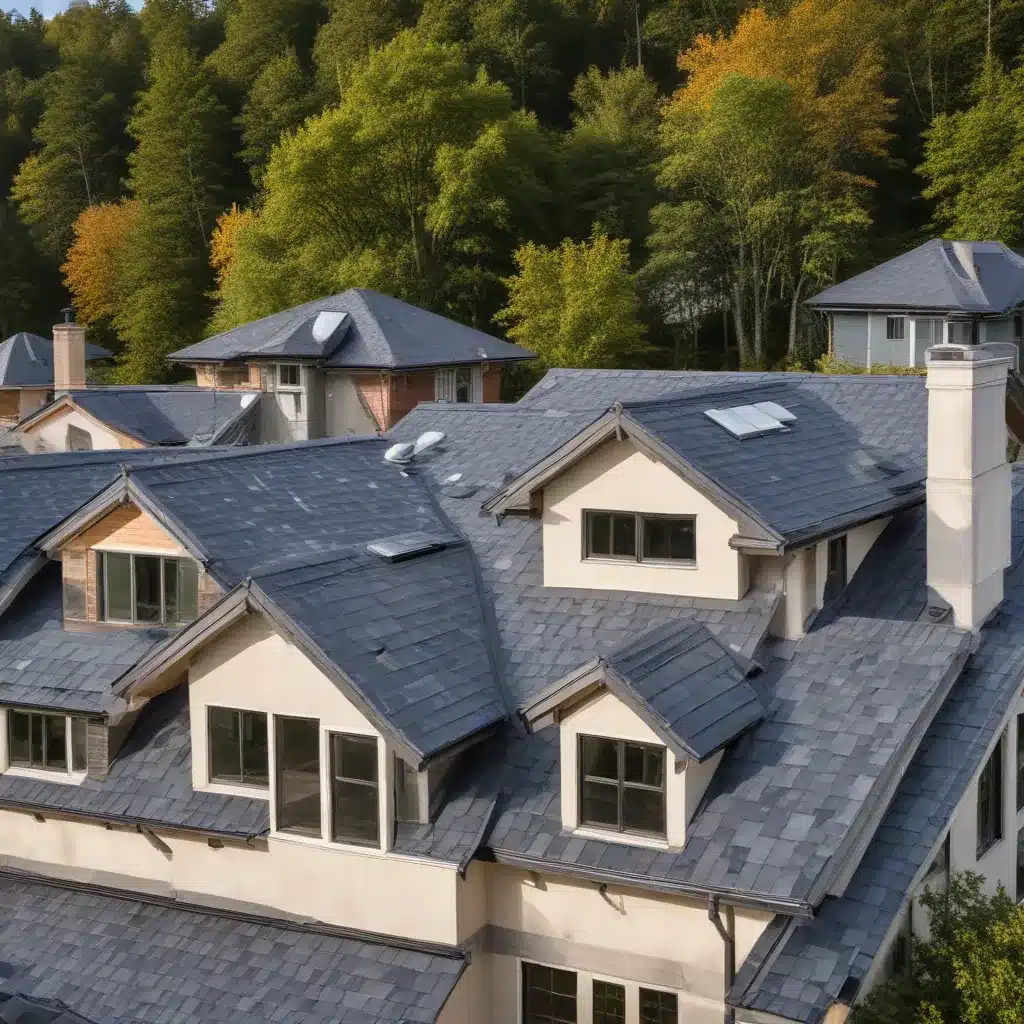
As an experienced roofing contractor who has worked in the Midland area for over a decade, I’ve seen firsthand the importance of sustainable roofing solutions for energy-efficient homes. In this article, I’ll share my insights on how homeowners and builders can leverage roofing materials, installation techniques, and design strategies to create passive homes that maximize energy savings.
Embracing Passive Solar Design
One of the most effective ways to optimize energy efficiency in a home is through passive solar design. This approach takes advantage of the sun’s natural heat and light to reduce the need for mechanical heating and cooling systems. At the heart of passive solar design is the strategic placement of windows, thermal mass, and shading elements to harness the power of the sun.
When designing a passive solar home, it’s crucial to consider the local climate and site conditions. In the Midland area, where we experience hot summers and mild winters, the focus should be on maximizing solar heat gain during the colder months while minimizing it during the warmer months. This can be achieved through thoughtful roof design and material selection.
Optimizing Roof Orientation and Pitch
The orientation and pitch of the roof play a significant role in passive solar performance. Ideally, the south-facing portion of the roof should be angled to capture the maximum amount of solar radiation during the winter, while the north-facing roof should be designed to minimize heat gain in the summer. By calculating the optimal tilt angle based on the latitude and desired seasonal performance, we can ensure the roof is positioned to make the most of the sun’s energy.
Selecting Energy-Efficient Roofing Materials
The choice of roofing materials can also greatly impact a home’s energy efficiency. Cool roofs, for example, utilize reflective surfaces that minimize heat absorption, keeping the interior of the home cooler during the summer months. Metal roofs, with their high reflectivity, are an excellent option for passive solar homes in the Midland area. Additionally, insulated roofing systems can help reduce heat transfer, further enhancing the home’s thermal performance.
Incorporating Thermal Mass
Thermal mass, in the form of materials like concrete, masonry, or water, plays a crucial role in passive solar design. These materials absorb and store heat during the day, then slowly release it back into the living spaces at night, helping to regulate temperature and reduce the need for mechanical heating and cooling. By strategically placing thermal mass elements, such as a Trombe wall or water-filled containers, within the home’s design, we can optimize the passive solar fraction and improve overall energy efficiency.
Addressing Summertime Comfort
While passive solar design excels at providing winter heating, it’s equally important to consider summer comfort in Midland’s climate. Overheating can be a concern, especially during the spring and fall shoulder seasons, when the sun’s angle is lower. To mitigate this, we can incorporate shading strategies, such as overhangs, awnings, or deciduous trees, to block direct sunlight during the warmer months. Nighttime ventilation, facilitated by strategically placed windows and vents, can also help flush out heat and maintain a comfortable indoor environment.
Ensuring Proper Ventilation and Air Sealing
In addition to passive solar design and roofing considerations, a well-sealed and properly ventilated home is essential for optimizing energy efficiency. Thorough air sealing, using techniques like caulking and weather-stripping, can help prevent unwanted air infiltration, which can significantly impact a home’s thermal performance. Balanced mechanical ventilation systems, such as heat recovery ventilators (HRVs) or energy recovery ventilators (ERVs), can also be integrated into the design to maintain indoor air quality while recovering the energy from exhaust air.
Integrating Renewable Energy Systems
Once the home’s energy demands have been minimized through passive design strategies and energy-efficient roofing, the next step is to consider integrating renewable energy systems. Solar photovoltaic (PV) panels, for example, can be seamlessly incorporated into the roof design to generate on-site electricity, further reducing the home’s reliance on the grid and fossil fuels.
Navigating Building Codes and Regulations
As you embark on your passive solar home project, it’s crucial to familiarize yourself with the local building codes and energy-efficiency regulations in the Midland area. These guidelines may include requirements for insulation levels, air sealing, and renewable energy integration. Consulting with local building officials and energy experts can help ensure your design and roofing solutions comply with the necessary standards.
Financing and Incentives
Investing in a passive solar home can be a significant upfront commitment, but the long-term energy savings and environmental benefits make it a worthwhile investment. Fortunately, there are various financing options and incentive programs available to help offset the initial costs. Homeowners may be eligible for federal tax credits, state-level rebates, or local utility-sponsored programs that support energy-efficient home improvements, including sustainable roofing and renewable energy systems.
Collaborating with Experienced Professionals
Designing and building a high-performance passive solar home requires the expertise of a multidisciplinary team, including architects, engineers, and experienced roofing contractors like myself. By working closely with these professionals, you can ensure that all aspects of the home’s design – from the roof to the building envelope and renewable energy systems – are optimized for maximum energy efficiency and comfort.
Embracing the Future of Sustainable Roofing
As the demand for energy-efficient homes continues to grow, the roofing industry has evolved to meet the challenge. At Midland Roofers, we are committed to staying at the forefront of sustainable roofing solutions, leveraging the latest materials, techniques, and design strategies to help homeowners and builders create passive homes that not only reduce energy consumption but also contribute to a more sustainable future.
By embracing passive solar design, energy-efficient roofing, and integrated renewable energy systems, we can work together to create homes that are not only more comfortable and cost-effective to operate but also kinder to the environment. I encourage you to explore the Midland Roofers website to learn more about our capabilities and how we can help you achieve your sustainable roofing goals.

